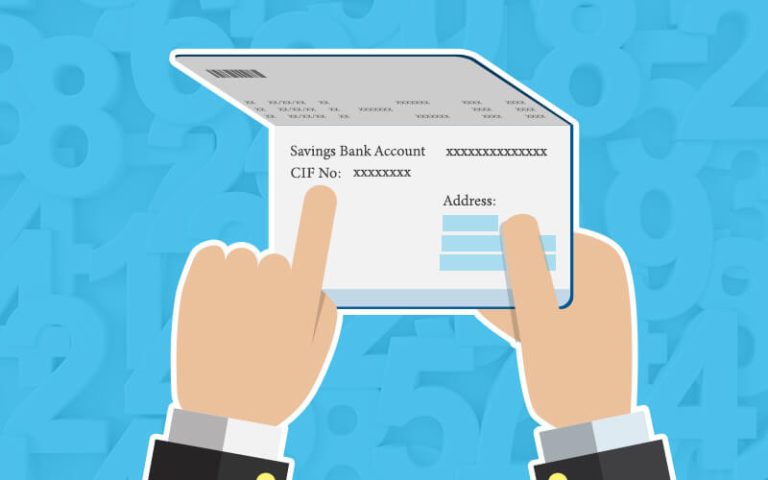A Customer Identification File (CIF) is an electronic file that stores a customer’s personal and account data. It is used by businesses to manage customer relationships and provide better service.
The Customer Identification File (CIF) typically includes the customer’s name, address, contact information, date of birth, and other personal details. It may also include information about the customer’s accounts, such as account numbers, balances, and transactions.
Table Of Content:
- CIF Full Form: Introduction Of CIF
- CIF Full Form: Creating a CIF
- CIF Full Form: Components of a CIF
- CIF Full Form: Security and Privacy
- CIF Full Form: Use Cases and Benefits
- CIF Full Form: CIF in Banking and Finance
- CIF Full Form: Integration with Technology
- CIF Full Form: Challenges and Considerations
- CIF Full Form: Future Perspectives and Innovations
- CIF Full Form: FAQs
Introduction to CIF

In the dynamic world of finance, efficient customer management is pivotal to the success of any financial institution. At the heart of this management lies the Customer Identification File (CIF), a digital dossier that encapsulates a customer’s essential information, financial history, and interactions. This digital repository plays a crucial role in shaping personalized experiences, ensuring compliance with regulations, and enabling seamless financial operations.
A CIF serves as a virtual passport for customers within a financial institution, allowing easy access to their profiles, accounts, and transactions. As technology continues to reshape the banking landscape, the CIF emerges as a cornerstone in the journey towards enhanced customer relationship management, streamlined processes, and data-driven insights.
In this exploration of the Customer Identification File, we delve into its significance, creation process, components, and the broader role it plays in modern banking and finance. By understanding the intricacies of CIF, we unlock the potential to provide tailored solutions, foster customer trust, and adhere to regulatory standards in a rapidly evolving financial ecosystem.
Creating a CIF
Establishing a comprehensive Customer Identification File (CIF) is a pivotal step in modern financial operations. The CIF serves as a digital nucleus, aggregating vital customer information, financial history, and interactions into a structured repository. This strategic process ensures personalized experiences, regulatory adherence, and streamlined financial transactions. Let’s embark on a journey through the creation of a CIF, unveiling the meticulous steps that underpin its formation.
1. Customer Onboarding: The Prelude to CIF Creation
- Data Collection: Gather essential customer data, including personal details, contact information, and identification documents.
- Verification and Authentication: Rigorously validate customer information through identity verification processes to establish authenticity.
2. Documentation and Data Entry: Constructing the CIF Foundation
- Data Input: Enter verified customer details into the digital CIF system, ensuring accuracy and completeness.
- Account Linkage: Associate relevant accounts, products, and services with the customer’s CIF for a holistic view.
3. Components of a CIF: Crafting a Comprehensive Profile
- Personal Information: Compile customer’s name, date of birth, address, and other pertinent identifiers.
- Financial Snapshot: Incorporate data on accounts, transactions, balances, and credit history.
- Interaction Records: Log customer interactions, queries, and service requests for reference and analysis.
4. Privacy and Security: Safeguarding Sensitive Data
- Data Protection Measures: Implement robust encryption, access controls, and cybersecurity protocols to safeguard customer information.
- Compliance Adherence: Ensure alignment with data privacy regulations and industry standards to protect customer privacy.
Components of a CIF
A Customer Identification File (CIF) serves as a digital passport, encapsulating essential details and interactions that characterize a customer’s journey within a financial institution. Comprising a comprehensive portrait, the CIF acts as a central hub for personalized experiences, regulatory compliance, and informed decision-making. Delve into the intricate components that constitute a CIF, crafting a nuanced understanding of its composition.
1. Personal Identification Information: Establishing Identity
- Name and Alias: Full legal name, any variations, and preferred name if applicable.
- Date of Birth: Birthdate for age verification and personalized communication.
- Contact Details: Current and alternate addresses, phone numbers, and email addresses.
- Identification Documents: Scanned copies of government-issued IDs, passports, driver’s licenses, or social security numbers for verification.
2. Financial Snapshot: Mapping Financial Landscape
- Accounts and Products: List of active accounts, including savings, checking, credit cards, loans, and investments.
- Transaction History: Overview of recent financial activities, deposits, withdrawals, and transfers.
- Balances: Real-time account balances, credit limits, outstanding debts, and available credit.
3. Interaction Records: Chronicles of Engagement
- Customer Inquiries: Records of inquiries, complaints, and requests made by the customer.
- Communication History: Log of emails, phone calls, chat conversations, and in-person interactions.
- Service Requests: Details of services requested and provided, such as account changes or information updates.
4. Risk Assessment and Compliance: Navigating Regulatory Landscape
- KYC Information: Know Your Customer data including risk profile, source of funds, and occupation.
- AML and CTF Data: Anti-Money Laundering and Counter-Terrorism Financing information for compliance checks.
- Sanctions Screening: Records of screenings against global sanctions lists.
Security and Privacy
-
1. Data Encryption: Fortifying Information Fortress
- End-to-End Encryption: Encrypt data during transmission and storage to prevent interception by unauthorized parties.
- Strong Encryption Algorithms: Utilize advanced encryption standards to render data unreadable without proper decryption keys.
- Role-Based Access: Grant access privileges based on job roles and responsibilities to restrict unauthorized viewing or modification.
- Multi-Factor Authentication: Implement multi-layered verification processes for authorized personnel.
- Firewalls and Intrusion Detection Systems: Deploy technology to detect and counter unauthorized access attempts.
- Regular Security Audits: Conduct routine assessments to identify vulnerabilities and patch potential security gaps.
- Data Privacy Laws: Adhere to regulations like GDPR, CCPA, and others to ensure customer data is handled lawfully.
- Financial Regulations: Comply with industry-specific guidelines to safeguard financial data and maintain transparency.
Use Cases and Benefits
-
1. Personalized Customer Experience: Navigating Individual Preferences
- Tailored Offerings: Utilize CIF data to design customized financial products and services that align with individual customer needs and goals.
- Personalized Communications: Craft targeted marketing campaigns and communication strategies based on customer preferences and behaviors.
- Quick Identification: Access relevant customer details promptly, facilitating efficient query resolution and reducing customer wait times.
- Comprehensive Understanding: Gain a holistic view of customer history and interactions, enabling representatives to provide informed assistance.
- Risk Profiling: Analyze CIF data to assess a customer’s creditworthiness, risk tolerance, and potential exposure.
- Fraud Detection: Detect irregular patterns or suspicious activities by monitoring CIF records, enhancing fraud prevention efforts.
- KYC and AML Compliance: Utilize CIFs to maintain accurate Know Your Customer (KYC) and Anti-Money Laundering (AML) information, ensuring regulatory compliance.
- Reporting Requirements: Generate accurate reports for regulatory authorities, showcasing adherence to financial regulations.
CIF in Banking and Finance
-
1. Retail Banking: The Foundation of Customer Relationships
- Account Management: CIFs provide a comprehensive view of a customer’s accounts, facilitating streamlined account opening, maintenance, and closure.
- Personalized Services: Utilize CIF data to design personalized banking experiences, offering relevant products, services, and financial advice.
- Portfolio Management: Leverage CIF insights to tailor investment portfolios based on a customer’s risk appetite, objectives, and financial profile.
- Wealth Planning: Utilize CIF data to offer strategic wealth planning solutions, encompassing retirement, estate, and tax planning.
- Credit Assessment: Analyze CIF data to evaluate a customer’s creditworthiness, enabling accurate loan origination and interest rate determination.
- Loan Repayment History: Access historical loan data within CIFs to assess repayment patterns and inform lending decisions.
- Personalized Interactions: Utilize CIF data to enhance customer interactions, ensuring that engagements are relevant and meaningful.
- 360-Degree View: CIFs provide a consolidated overview of a customer’s financial journey, enabling relationship managers to offer informed guidance.
Integration with Technology
-
1. Digital Onboarding: Accelerating Customer Access
- Online Account Opening: Integrate CIF data with digital platforms, allowing customers to open accounts remotely and conveniently.
- E-KYC Verification: Leverage technology for electronic Know Your Customer (e-KYC) verification, expediting customer onboarding.
- Automated Data Entry: Integrate CIFs with data capture tools to automate information input, reducing manual errors and saving time.
- Workflow Management: Implement technology-driven workflows for account maintenance, reducing processing time and enhancing efficiency.
- CIF Access: Enable customers to view and update their CIF data through secure online portals, fostering self-service and data accuracy.
- Transaction Tracking: Provide real-time access to transaction histories, empowering customers to monitor their financial activities.
- Advanced Analytics: Integrate CIF data with analytics platforms to extract valuable insights for customer segmentation, trend analysis, and predictive modeling.
- Personalized Recommendations: Utilize analytics to offer tailored financial recommendations based on customer behaviors and preferences.
Challenges and Considerations
While Customer Identification Files (CIFs) offer numerous benefits to financial institutions, their management comes with a set of challenges and considerations that require careful attention. Navigating these complexities is essential to ensure data accuracy, regulatory compliance, and customer trust. Here, we explore the key challenges and considerations associated with CIF management.
1. Data Accuracy and Quality:
- Challenge: Maintaining accurate and up-to-date customer data within CIFs can be challenging due to data entry errors, duplicates, and outdated information.
- Consideration: Implement data validation checks, regular data audits, and automated data entry processes to enhance data accuracy.
2. Data Privacy and Security:
- Challenge: Safeguarding sensitive customer information from data breaches and unauthorized access is a critical concern.
- Consideration: Implement robust cybersecurity measures, encryption protocols, access controls, and regular security audits to protect CIF data.
3. Regulatory Compliance:
- Challenge: Adhering to evolving data protection and financial regulations (such as KYC, AML, GDPR, etc.) requires ongoing monitoring and adjustments.
- Consideration: Stay updated on regulatory changes, establish compliance protocols, and conduct periodic reviews to ensure CIFs meet regulatory standards.
4. Integration and Interoperability:
- Challenge: Integrating CIFs with various systems and platforms across the organization can be complex, leading to data inconsistencies.
- Consideration: Implement robust data integration strategies, use standardized data formats, and ensure seamless interoperability across departments.
Future Perspectives and Innovations
The realm of Customer Identification Files (CIFs) is poised for remarkable evolution, driven by technological advancements, changing customer expectations, and regulatory shifts. As the financial landscape continues to transform, let’s peer into the crystal ball to glimpse the future perspectives and innovations that will shape the trajectory of CIFs.
1. Enhanced Customer Insights through AI and ML:
- Predictive Analytics: AI and machine learning algorithms will leverage CIF data to predict customer behaviors, enabling proactive service offerings and personalized recommendations.
- Sentiment Analysis: AI-driven sentiment analysis will gauge customer emotions and preferences from interactions, leading to more empathetic and relevant engagement.
2. Blockchain-Powered Security and Transparency:
- Decentralized CIFs: Blockchain technology will enable the creation of decentralized CIFs, enhancing data security, ownership control, and transparency for customers.
- Immutable Records: CIF data stored on blockchain will provide tamper-proof records of customer interactions, bolstering data integrity and auditability.
3. Hyper-Personalization and Customization:
- Individual Financial DNA: CIFs will be enriched with a deeper understanding of each customer’s financial DNA, allowing for hyper-personalized services tailored to their unique needs and aspirations.
- Real-Time Insights: Real-time analysis of CIF data will enable instant customization of financial recommendations and product offerings.
FAQs
A Customer Identification File (CIF) is a digital repository that contains essential details and interactions of a customer within a financial institution. It includes personal information, account history, transaction records, communication logs, and more.
A CIF comprises a range of data, including:
- Personal identification details (name, date of birth, contact information)
- Account information (savings, checking, loans, investments)
- Transaction history (deposits, withdrawals, transfers)
- Communication records (emails, phone calls, inquiries)
- Compliance and risk assessment data (KYC, AML information)
- Customer preferences and behavioral patterns
When a customer establishes a relationship with a financial institution, a CIF is typically created. This involves gathering and recording the customer’s personal and financial details, which form the foundation of their CIF.
CIFs serve multiple purposes, including:
- Enabling personalized customer experiences and tailored financial solutions.
- Facilitating regulatory compliance, such as KYC and AML requirements.
- Streamlining account management, transactions, and customer service.
- Providing insights for data-driven decision-making and business strategies.
Related posts:
- AMC Full Form: Benefits, Components, Needs, Advantage
- ORS Full Form: Dehydration, Myths, Flavors, Varieties & Facts
- PCC Full Form: Importance, Types, Application Process
- PAN Full Form: Legal Provisions, Regulations,
- BRB Full Form: Productive, Routine, Distractions
- MCD Full From: Introduction, Responsibility, Challenges
- CT Scan Full Form: Scans, price, Advantages
- USA Full Form: History, Economics,Technology, culture




















